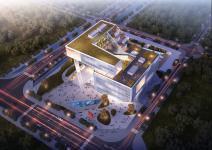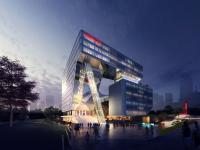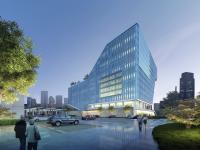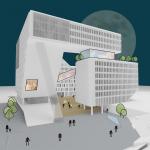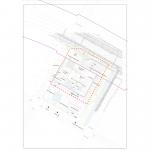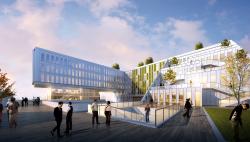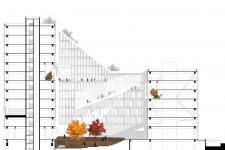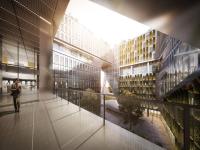In 2018, Vanke Group planned to build a new office building as their headquarters in Chongqing. Our company participated in the bidding process, and in this project plan, we explored the possibility of high-density cities and the activation of the “Third Place” in the city.
The Third Place is a concept mentioned by American sociologist Ray Oldenburg in his book, The Great Good Place. The concept emphasizes that other than home and place for work, the most important living space in the modern city is actually the various non-official gathering spaces. The Third Place reflects the vitality and richness of the city the most, linking people, culture and city in one.
Social development and work have separated from the mechanical labour from the past as much as possible, there are more and more interdisciplinary and industry exchanges. The relevant office space is not limited to the past pattern as well. Mobile and remote offices have gradually become the norm. The boundaries between office and leisure space, and even residence space are blurred. Therefore, the space is no longer just a closed and fixed office in the past, but the building space should also have more possibilities.
Compared to splitting the Vanke headquarters into several independent office buildings, we are more inclined to believe that it should be a high-density large-scale building that integrates three functions, Chongqing Vanke’s own office, partner office and office for external rent, into one.
The three major functions fit together as mortise and tenon, avoiding separation for respective independence. At the same time, the connecting point forms a neutral flexibility space and provides independence for the function area, but also retains the possibility of flow too.
The neutral space formed by the mortise and tenon joints is what we defined as Third Place that is the unofficial gathering space that blurs the boundaries and due to neutrality, provides the chance for flexibility without limits.Thus, the space enables people to use freely the building and gives new functions for the building, which creates a new and vibrant public space in the city.
The Third Place starts from the public square on the ground floor, and gradually extends into the interior of the building along the neutral space, forming a distance and intimacy at the same time between independent space and public space. The originally enclosed high-density building surface is opened up, and through the gap grew the most dynamic Third Place of the city, breaking the enclosed status of the land.
Inside the high-density building, gradually infiltrated public space is the core of the buildingas well asan extension of the city. The virtuous interaction between building and city space stimulates each other, which would be a new feature of the futuristic city.
2018
2019
Wu Wenbo, Chen Hanfei, Guo Dongqing, Huang Ruorong, Zhang Tao, Yue Bingbing, Sun Dan
Favorited 1 times

